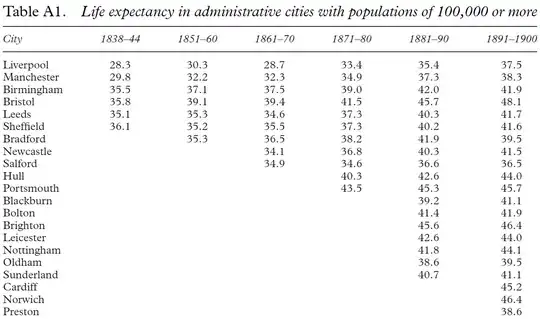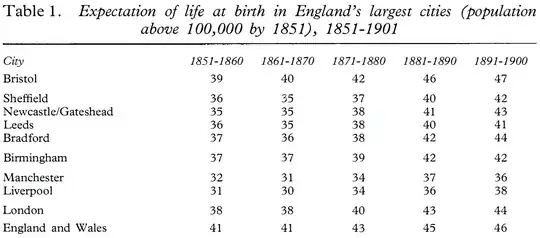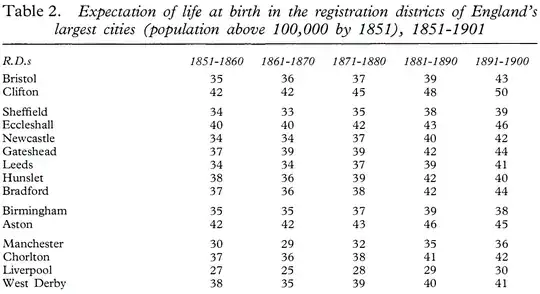DK History of Britain and Ireland: The Definitive Visual Guide (2011) claims:
17 The average life expectancy in years in Liverpool during the 1850s. High infant mortality depressed the figure, as did the city’s unhealthy cellar dwellings and an influx of famine-weakened Irish immigrants.



